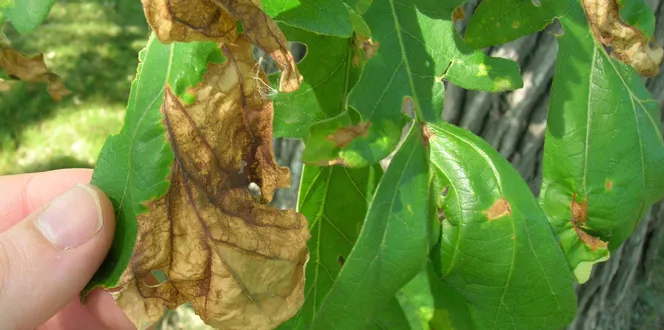Ah, remember the joy of plopping down on the playground swing set, kicking up your feet and pumping them back until you felt like you were flying.
Recreating that feeling right in your backyard is possible with a good ol’ fashioned tree swing. With the right tree and proper tools, you’ll have your youngsters swinging in the breeze in no time.
Read on to learn about the best approach to creating a kid-proof, tree-friendly swing.
The best tree swings for your kids and your tree
Before rigging up the rope, run your tree through this three-point checklist to make sure it’s a good candidate for a swing.
- The tree is established and sturdy. Mature hardwood trees like maple, oak or sycamore are the best choices. Avoid more delicate trees like willow, birch, evergreen or ash.
- The branch that will hold the swing is thick enough. The rule of thumb is to attach to a branch that’s at least 8 inches in diameter.
- The tree is in good health. Cracks or splits in the trunk, dead or hanging branches or decayed spots indicate a tree isn’t in tip-top shape. Check here for other signs of an unhealthy tree.
If you’re not quite sure that your tree passes the test, (especially the last point about good health) contact an arborist for a second opinion.
Will a tree swing hurt my tree?
Swingin’ is all about havin’ fun, but there’s nothing fun about compromising the health of your tree and having to deal with the damage later.
A rope and a branch with nothing in between can certainly damage a tree. Each time you take a swing, the rope rubs against the branch, eventually stripping off pieces of bark and leaving the tree open and vulnerable to pests or disease. To save your tree from worn down bark, slide a tube of rubber on the rope so it’s not directly on the tree.
Another option is drilling into the branch and popping in eye bolts to hang the rope. This method can also cause damage because wounded bark exposes trees to infection. Mature and healthy trees do have the ability to heal wounds on their own over time, so this approach isn’t completely out of the question. But, keep in mind that drilling into bark is a dangerous process, and there’s no way to keep your tree 100% safe from future damage.
Tools and tips for hanging a tree swing safely
Feel confident in the safety of your tree swing with these tips.
- Use a reliable rope material like polyester, manila or braided nylon. It should be ¾ inches or more in diameter.
- Leave at least 3 feet of space between the trunk and the swing.
- Measure for the right height. Swings should sit approximately 24 inches off the ground.
- Ensure a safe landing! Attach the swing above an area full of grass and free of exposed roots.
- Inspect the rope periodically to make sure it’s still in good shape, and replace it when it starts to wear. As the tree branch holding the swing grows wider, replace the rope to fit and avoid girdling.





